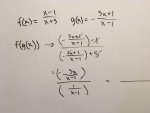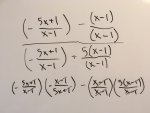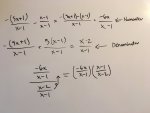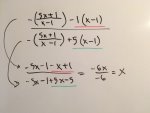Hello everyone,
I'm unsure about solving for the inverse for the problem stated in my attachment file. It should be inversely related and result in x. So far, I think I'm cancelling out the right values but have 5x in there and I need to get rid of it. Can someone point me in the right direction, please?
I'm unsure about solving for the inverse for the problem stated in my attachment file. It should be inversely related and result in x. So far, I think I'm cancelling out the right values but have 5x in there and I need to get rid of it. Can someone point me in the right direction, please?




